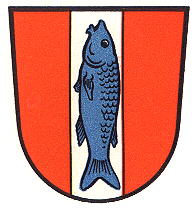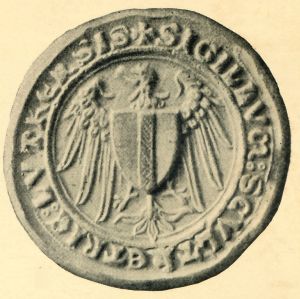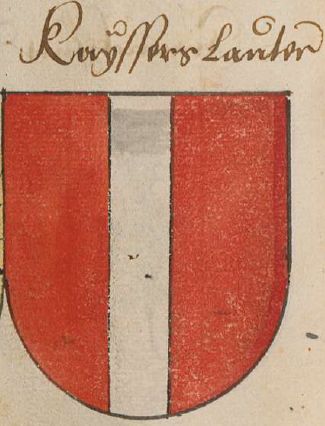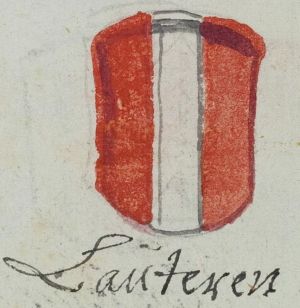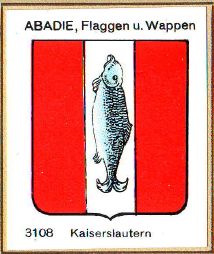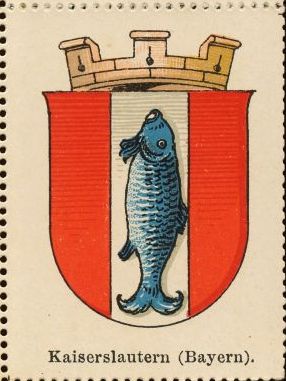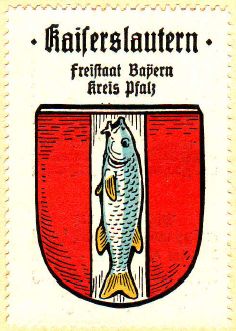Kaiserslautern: Difference between revisions
Knorrepoes (talk | contribs) |
Knorrepoes (talk | contribs) m (Text replacement - "===Official blazon=== *(de) " to "{| class="wikitable" |+Official blazon |- |'''German''' | ") |
||
| Line 8: | Line 8: | ||
[[File:kaisersl.jpg|center|Wappen von {{PAGENAME}}]] | [[File:kaisersl.jpg|center|Wappen von {{PAGENAME}}]] | ||
= | {| class="wikitable" | ||
|+Official blazon | |||
|- | |||
|'''German''' | |||
| | |||
In Rot einen silbernen Pfahl, belegt mit einem steigenden blauen Fisch. | |||
===Origin/meaning=== | ===Origin/meaning=== | ||
Revision as of 07:51, 5 July 2022
This page is part of the German heraldry portal Deutsche Wappensammlung |
Heraldry of the World |
|
German heraldry:
|
Selected collector's items from Germany:
|
KAISERSLAUTERN
State : Rheinland-Pfalz
Urban district (Stadtkreis) : Kaiserslautern
Additions : 1969 Dansenberg, Erfenbach (1937 Stockborn), Erlenbach, Hohenecken, Mölschbach, Morlautern, Siegelbach
| German |
In Rot einen silbernen Pfahl, belegt mit einem steigenden blauen Fisch. Origin/meaningThe arms were granted on August 3, 1842. Kaiserslautern became a city already in the 12th century. The oldest seal is known since 1262 and shows a pale between two towers behind walls. The pale probably is the Lauter river, but can also be derived from the arms of the Lords of Hohenecken, who used a silver pale in red, flanked on each side by 5 golden billets. The fish have not always been shown on the pale. In a roll of arms from 1530 the arms are as they are today, but without the fish. Similarly, on another 14th century seal the arms, without fish, are placed on the breast of the imperial eagle. The colours are also not changed since the roll of arms in 1530, the oldest coloured image of the arms. Sometimes, however, the fish was shown in silver on a blue pale.
There is another story about the origin of the fish : Contact and SupportPartners: Your logo here ?
© since 1995, Heraldry of the World, Ralf Hartemink Literature : Stadler, 1964-1971, 8 volumes. |


